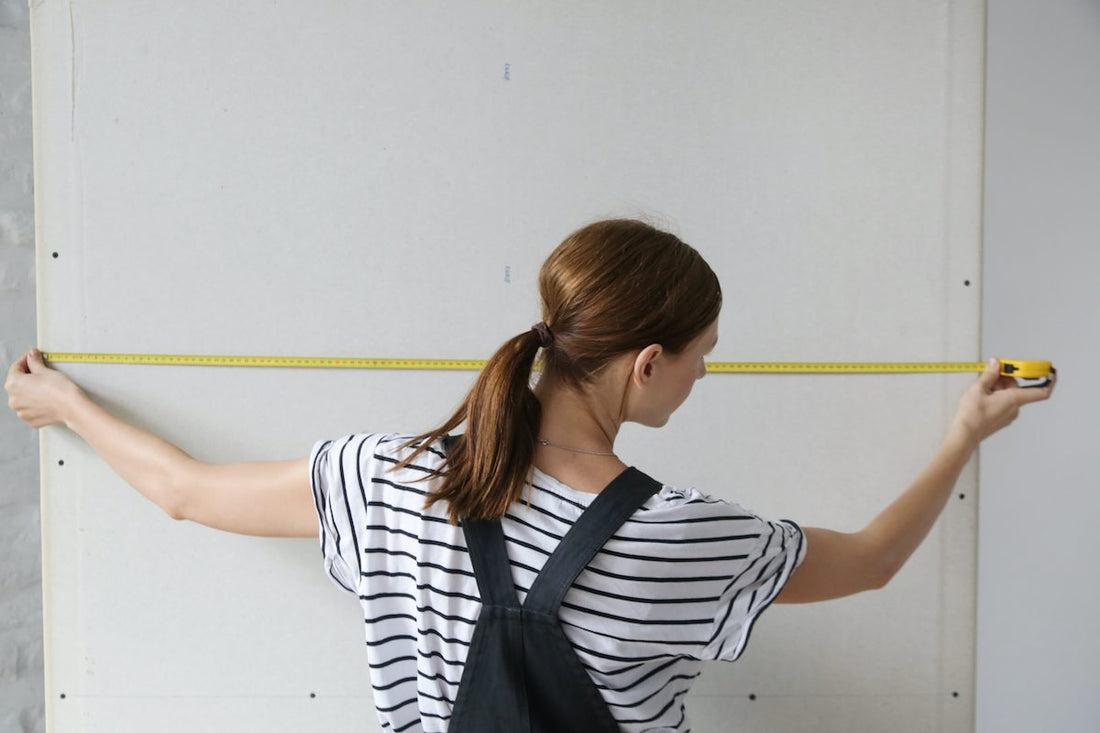
Mastering the Art of Measuring Walls for Wallpaper: A Complete Guide
Share
Applying wallpaper is an excellent way to transform a room, adding personality and style with relative ease. However, the success of your wallpaper project hinges significantly on accurate measurements and proper planning. In this guide, we'll delve into the essential steps of measuring a wall for wallpaper, discussing the nuances of pattern repeats, the importance of overage, common pitfalls to avoid, and why ordering enough rolls in one go is crucial for a seamless finish.
Understanding the Basics: Measuring Your Wall
Before you embark on your wallpapering journey, start by measuring the wall or walls you intend to cover. Follow these steps to ensure accuracy:
-
Measure the Height: Using a tape measure, determine the height of the wall from floor to ceiling. Measure at several points along the wall to account for any variations in ceiling height.
-
Measure the Width: Measure the width of the wall from corner to corner. Again, take measurements at multiple points, especially if the wall isn’t perfectly straight.
-
Calculate the Total Area: To find the total square footage or square meters of the wall, multiply the height by the width. For example, if your wall is 10 feet high and 12 feet wide, the total area is 120 square feet.
Understanding Pattern Repeats and Overage
One of the trickiest aspects of measuring for wallpaper is accounting for pattern repeats:
-
Straight Match: In a straight match, the pattern design continues across the width of the wallpaper in a straightforward manner. When hanging consecutive strips, you match the design along the horizontal seam.
-
Drop Match: A drop match involves a staggered alignment where the design drops down the length of the strip before repeating. There are several types of drop matches:
- Half-drop: The pattern repeats every other strip at half the height of the pattern repeat.
- Multiple drop: The pattern repeats every few strips, creating a more complex match.
-
Random Match: In a random match, there is no noticeable repeating design, making it easier to install because there's no need to align the pattern across strips.
Adding Overage
To accommodate pattern repeats and ensure you have enough wallpaper for corners, doors, windows, and mistakes, add a percentage to your total square footage. Typically, adding 10-15% to your total square footage is recommended.
Common Mistakes to Avoid
Several common errors can derail your wallpapering project:
-
Underestimating the Quantity: Ordering insufficient wallpaper is a costly mistake. If you run out and need to order more, there’s a risk that the new batch won’t match perfectly due to slight color variations between production runs.
-
Ignoring Pattern Repeats: Forgetting to factor in pattern repeats can lead to visible mismatches between strips, disrupting the overall look of the wallpaper.
-
Not Accounting for Wastage: Accidents happen during installation. Having extra wallpaper on hand ensures you can correct mistakes without delay.
Importance of Ordering Enough Wallpaper
Ordering all your wallpaper at once is crucial for consistency:
-
Batch Variations: Wallpaper can vary slightly between production batches. Ordering all rolls at the same time ensures color consistency throughout your project.
-
Avoiding Discontinuation: Designs can be discontinued or go out of stock. Ordering extra ensures you have spare rolls for future repairs or touch-ups.
Conclusion
Measuring a wall for wallpaper requires attention to detail and careful consideration of pattern repeats and overage. By understanding the different types of pattern matches—straight, drop, and random—and the importance of ordering sufficient wallpaper from the outset, you’ll set yourself up for a successful and visually appealing wallpaper installation. Remember, accuracy in measurement and planning ensures your wallpaper not only fits perfectly but also enhances the beauty of your space for years to come.

